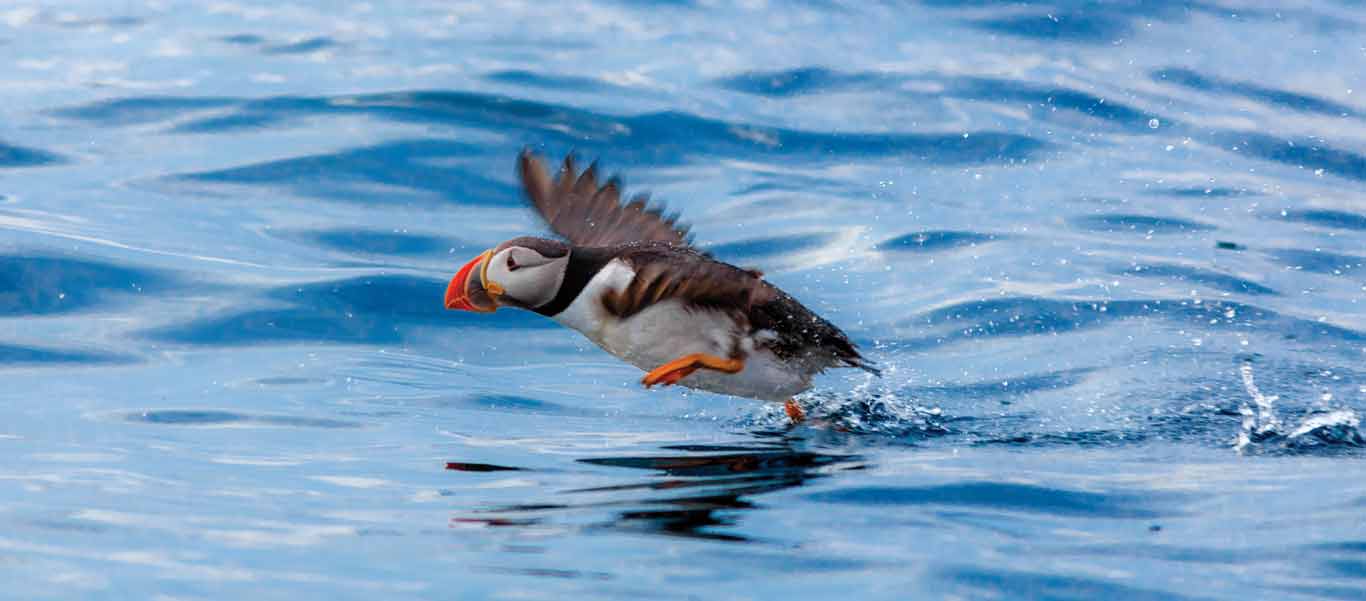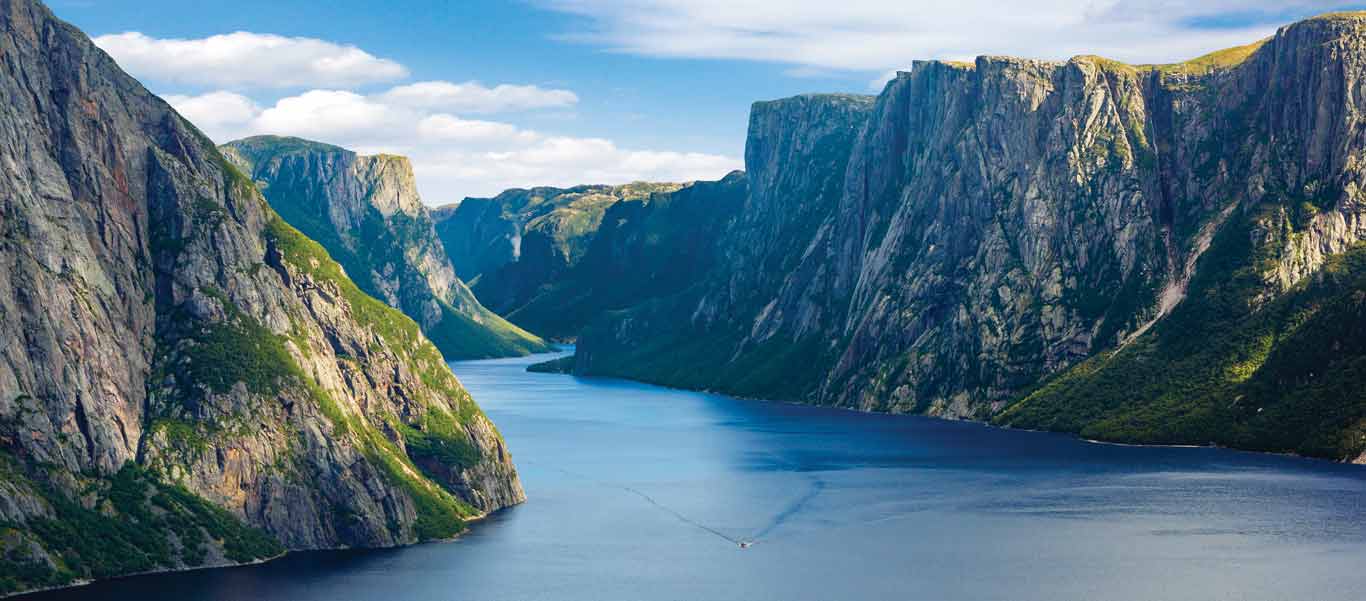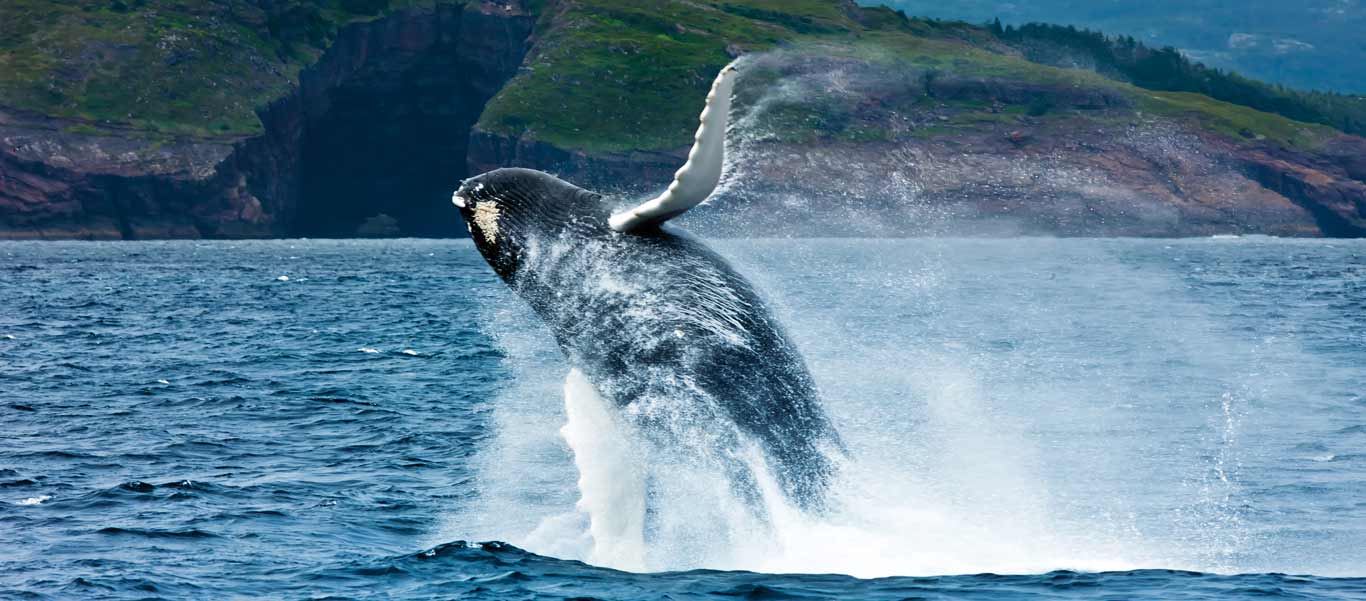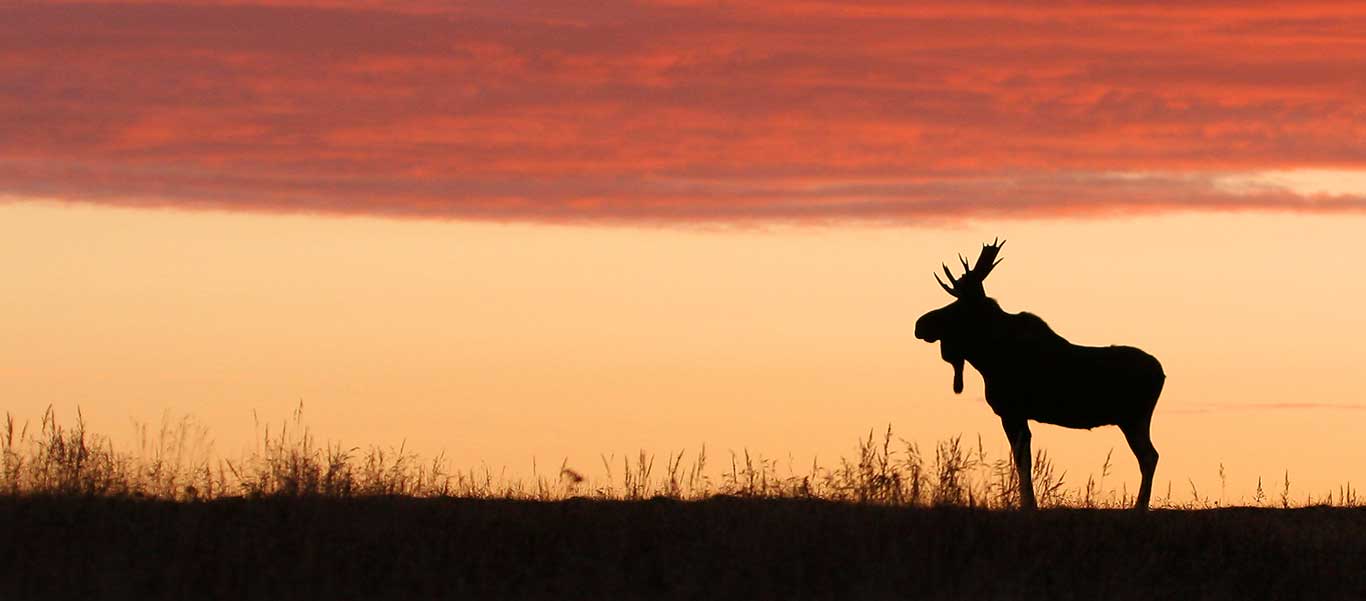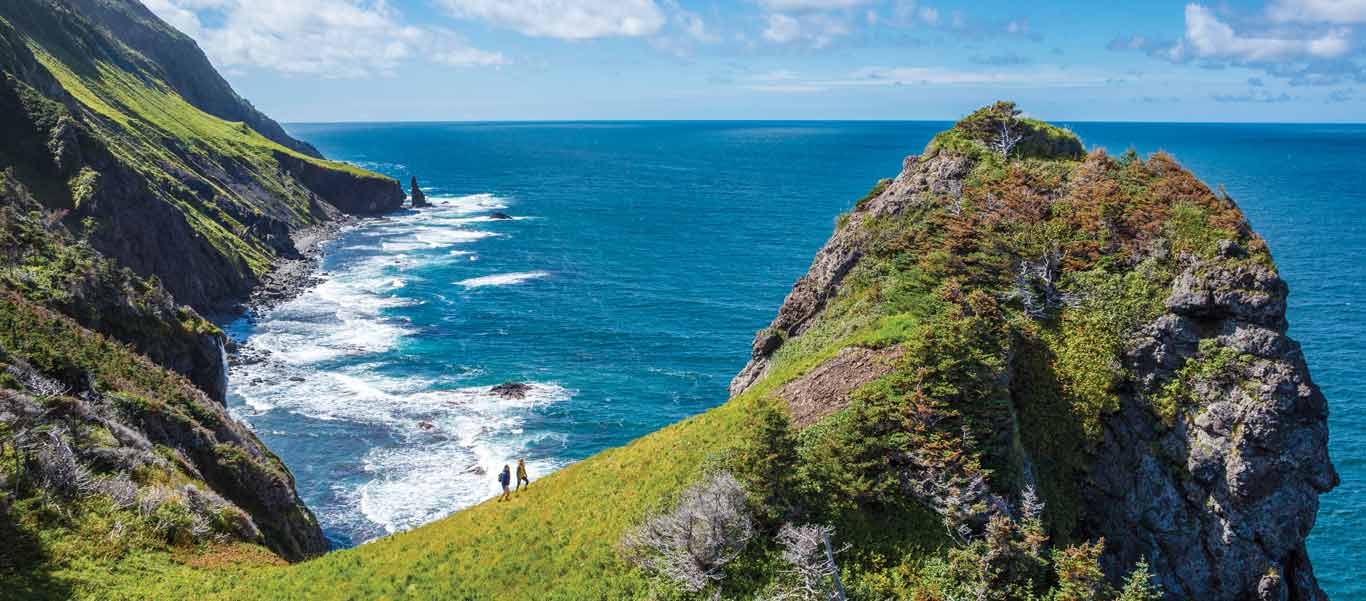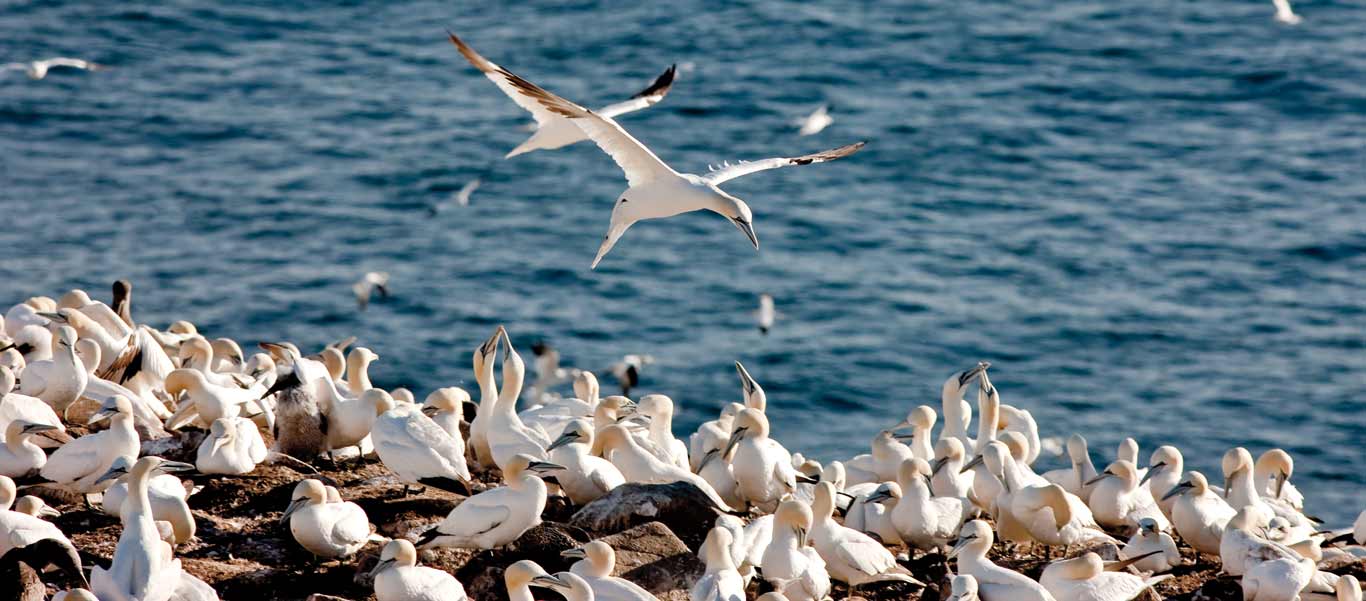Newfoundland & Labrador
Newfoundland & Labrador Tour
Newfoundlanders call their homeland “The Rock,” and it is certainly a fitting name for this craggy outcrop in the northern Atlantic. But a rock is cold and unvaried, two things Canada’s easternmost province isn’t. Join Apex on a 15-day Newfoundland & Labrador tour through this stunning region, feel the warmth of its people, and hear an English so different it has its own dictionary. The surprising diversity of its landscapes will leave you speechless as you travel the region and find strange geological phenomena, icebergs drifting past on a summer day, and fjords with walls so steep you’d think you were in Norway. Explore Battle Harbour, Labrador, where distance from the modern world can be measured in both miles and years. See huge numbers of Moose, whales and breeding seabirds. Immerse yourself in this spectacular and most-unique Canadian province.
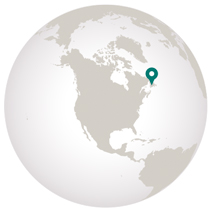
Destinations
- Travel by Air
- Travel by Road
- Travel by Boat
- Travel by Bullet Train
- Travel by Rail
- Travel by Dog Sled
-
Sunday, June 23: Arrive St. John’s, Newfoundland
Arrive in North America’s oldest city this evening and transfer to the Sheraton Hotel Newfoundland for an overnight stay.
-
Monday, June 24: St. John’s
After breakfast, take a shuttle to nearby Bay Bulls, where you will embark a scenic boat tour of the Witless Bay Ecological Reserve. See icebergs floating down from Greenland as you head toward the cliffs, where North America’s largest Atlantic Puffin colony nests, with over 260,000 pairs present in the summer. The Reserve also hosts the world’s second-largest colony of Leach’s Storm-petrels, with some 620,000 pairs, and thousands of Black-legged Kittiwakes and Common Murres. The reserve’s waters are home to 22 species of whales, including the world’s largest population of Humpbacks. See them frolic, breach, and fin slap as they pursue massive schools of tiny Capelin fish. After lunch, visit North America’s most easterly point, and Newfoundland’s oldest surviving lighthouse, at Cape Spear National Historic Site. Back in St. John’s, walk up to Signal Hill, where Guglielmo Marconi received the first-ever transatlantic wireless signal in 1901. Enjoy a welcome dinner at a local restaurant, and overnight at Sheraton Hotel Newfoundland.
-
Tuesday, June 25: St. John’s / Cape St. Mary's / Port Rexton
Head southwest this morning toward the Cape Shore. After lunch, visit Newfoundland’s largest, and one of the world’s most accessible, seabird colonies at Cape St. Mary’s Ecological Reserve. It is estimated that 24,000 Northern Gannets, 20,000 Black-legged Kittiwakes, and 22,000 murres, as well as Razorbills and Black Guillemots breed here every summer. Hike to “Bird Rock” to be awed by the sheer number of birds hovering around the cliffs. Afterwards, keep your eyes open for Moose along the road as we head to historic Port Rexton on the Bonavista Peninsula. Explore its crooked seaside lanes and storybook heritage houses before dinner in town. Overnight at Fishers’ Loft.
-
Wednesday, June 26: Bonavista Peninsula
This morning, take a two- to three-hour moderate hike on the Skerwink Trail. Be on the look out for seabirds including Great Black-backed Gulls and guillemots; Humpback Whales; bird life such as Bald Eagles, warblers, Blue Jays or Greater Yellowlegs; and a variety of flora. After lunch in Trinity, head north, stopping in Elliston to view a small puffin colony. Continue on to Bonavista, where John Cabot first landed on his voyage from England in 1497. Visit Ryan Premises National Historic Site to get a sense of the large-scale merchant operations that existed here. Enjoy dinner at a popular local restaurant, then drive back to Port Rexton for overnight at Fishers’ Loft.
-
Thursday, June 27: Port Rexton / Gander / Grand Falls–Windsor
After breakfast, depart and head west across the island via the TransCanada Highway. Stop in Gander to visit the North Atlantic Aviation Museum. Learn about how this small town earned the nickname “Crossroads of the World,” its importance as a strategic base during WWII, and its unexpected role in the days following 9/11. Visit the Salmonid Interpretation Center on the Exploits River, and watch through underwater windows to see the “King of Fish” traveling upstream. Dinner and overnight at Mount Peyton Hotel.
-
Friday, June 28: Woody Point / Gros Morne National Park
Today, continue west via the TransCanada Highway to the geologically fascinating, Gros Morne National Park, on Newfoundland’s west coast. After lunch in Woody Point, set out on a hike along the Tablelands Trail. Geology here marks a time when the continent of Africa and North America collided, pushing the rocks, originally beneath the ocean, to their present position on land. Take the Woody Point ferry across the Bonne Bay to Norris Point. Dinner and overnight at Neddies Harbour Inn.
-
Saturday, June 29: Gros Morne National Park
As Prince Edward noted, “What the Galapagos are to biology, Gros Morne is to geology.” Gros Morne is the eroded remnants of a mountain range formed 1.2 billion years ago, and it provides a rare example of the process of continental drift, where deep ocean crust and the rocks of the earth’s mantle lie exposed. For this reason, and due to its sheer scenic majesty,it was designated a United Nations World Heritage Site in 1987. After breakfast, head to Western Brook Pond, the park’s largest lake (actually a landlocked fjord) and enjoy an hour-long interpretive hike down to the dock, followed by a boat tour that winds between massive billion-year-old cliffs. Behold 2,000-foot waterfalls, as well as an unusual colony of cliff-nesting gulls, and Atlantic Salmon, Brook Trout and Arctic Char in the lake’s water. This afternoon, head to the 19thcentury Lobster Cove Head Lighthouse with spectacular views over Bonne Bay and Rocky Harbour. Dinner and overnight at Neddies Harbour Inn.
-
Sunday, June 30: Gros Morne National Park / Forteau, Labrador
Depart Gros Morne this morning and head north on the historic Viking Trail Highway, continuing our wildlife spotting all the way. Stop en route at Port au Choix National Historic Site.Long before the European’s set foot on the New Founde Lande, the Maritime Archaic Indian, Dorset and Groswater Paleoeskimo, and “Recent Indians” foraged and hunted the land and sea’s bounty. You will explore one of North America’s most fascinating archaeological finds amid a rugged coastline of unique limestone barrens, forests and bays. Visit ancient burial sites, settlements and view original artifacts, from slate spears to harpoons. A short trip on the St. Barbe Ferry across the Gulf of St. Lawrence to Labrador allows for a wonderful opportunity to view pelagic seabirds, whales, seals and icebergs. Disembark at Blanc-Sablon and travel to Forteau where you will enjoy dinner and overnight at The Florian.
-
Monday, July 1: Red Bay / Battle Harbour
This morning, tour Red Bay’s National Historic Site, designated a World Heritage Site in 2013. During the mid-16th century, Basque whalers established a major whaling port here, hunting Right and Bowhead Whales in the Strait of Belle Isle. For some 70 years, they made the dangerous, month-long journey across the Atlantic to collect the oil that lit the lamps of Europe. After lunch at a local restaurant, continue north to Mary’s Harbour. From here, take the ferry to Battle Harbour for dinner and overnight at Battle Harbour Inn.
-
Tuesday, July 2: Battle Harbour
Battle Harbour is one of the only places on earth where distance from the modern world can be measured in both miles and years. A place without power lines or cell towers, without cars or paved roads, you can walk footpaths worn by fishermen and merchants centuries ago. In addition to its heritage, the rugged beauty of Battle Harbour offers an exotic backdrop for explorers. View dramatic ocean vistas, icebergs, and whales all within arm’s reach on a boat tour of Cape Charles. Have an opportunity to hike the island revealing its Arctic vegetation and rock formations. Dinner and overnight at Battle Harbour Inn.
-
Wednesday, July 3: Battle Harbour / Forteau
After breakfast, take the ferry back to Mary’s Harbour and return to Forteau. After lunch, hike along the coastline to L’Anse Amour to see the elaborate 7,500-year-old Burial Mound of a Maritime Archaic adolescent; the hundred-year-old remains of the HMS Raleigh, one of several ships that went aground in the hazardous Strait of Belle Isle. Stop to photograph Point Amour lighthouse, the tallest of its kind in Atlantic Canada. Return to Forteau for dinner and overnight at The Florian
-
Thursday, July 4: Forteau / St. Anthony, Newfoundland
Bid farewell to Labrador as you take the ferry back across the gulf. Make a stop in Flower’s Cove for lunch and, time permitting, a stop at the rare and ancient thrombolites famous in this area. In the afternoon, enjoy a boat tour in the coastal waters off St. Anthony to see whales, dolphins and icebergs up close. Enjoy dinner then overnight at Grenfell Heritage Suites.
-
Friday, July 5: St. Anthony – L’Anse aux Meadows
At the northernmost tip of the island lies L’Anse aux Meadows, archaeological remnants of the first known European presence in the Americas, and the only authenticated Viking site in the Americas. Dating back over 1,000 years, this Norse encampment is notable for its possible connection with the attempted colony of Vinland established by Leif Erikson around the same period. Delve even further into the Viking experience as you explore the Norstead Viking Village. Enjoy dinner then overnight at Grenfell Heritage Suites.
-
Saturday, July 6: St. Anthony / St. John’s
Enjoy some more sightseeing around town this morning with lunch at a local restaurant. Before your afternoon flight to St. John’s, visit the Grenfell Historic Properties. Named after the local legend, Sir Wilfred Grenfell, who traveled by dogsled and boat in the late 19thcentury and built hospitals and nursing stations along the coast of Labrador and around St. Anthony.Afterwards, transfer to the airport for a quick flight to St. John’s. Gather for an early farewell dinner before turning in for your early morning flights. OvernightSheraton Hotel Newfoundland.
-
Sunday, July 7: Depart St. John's
Early this morning, transfer to the airport for your international flights home.

